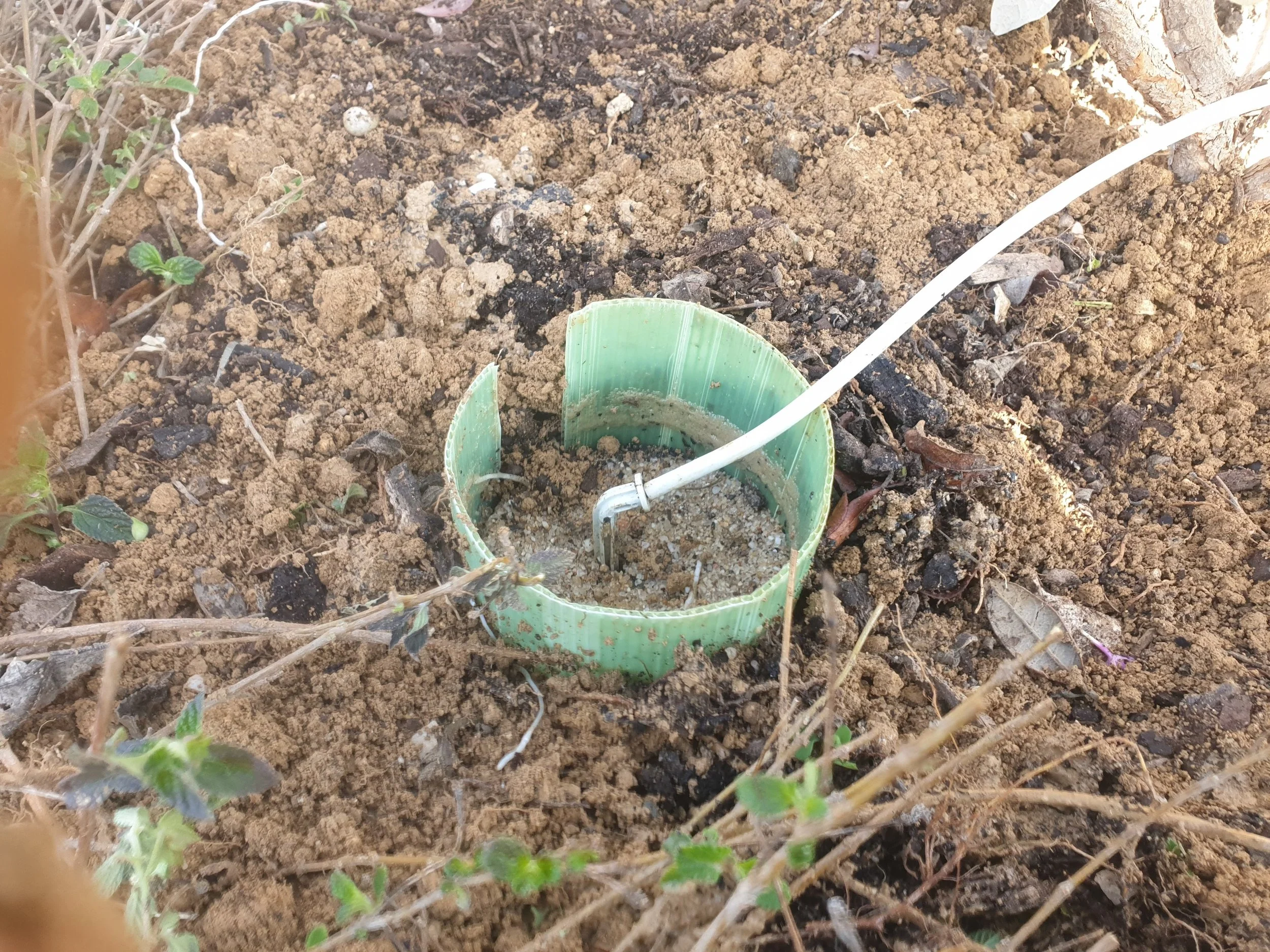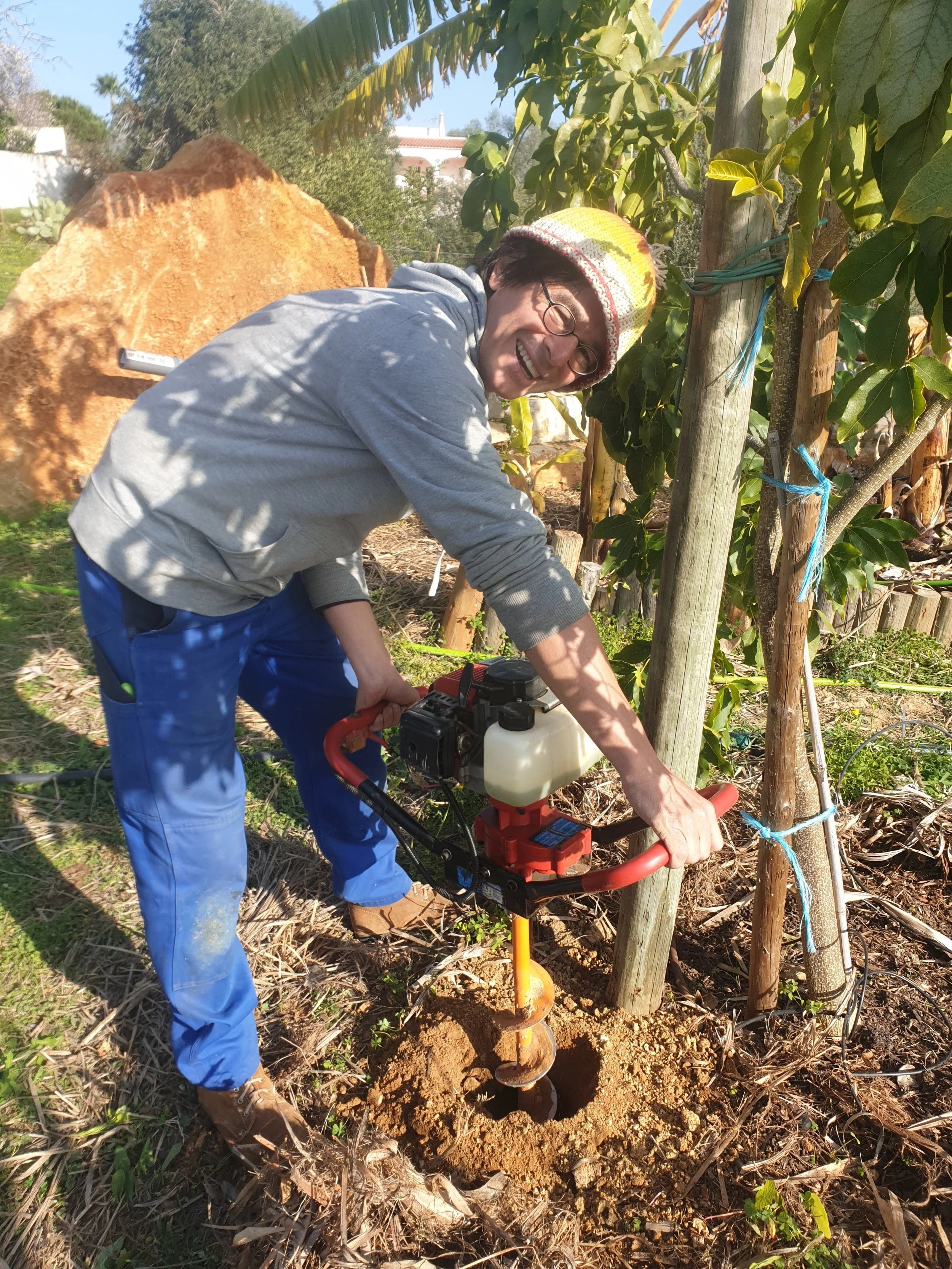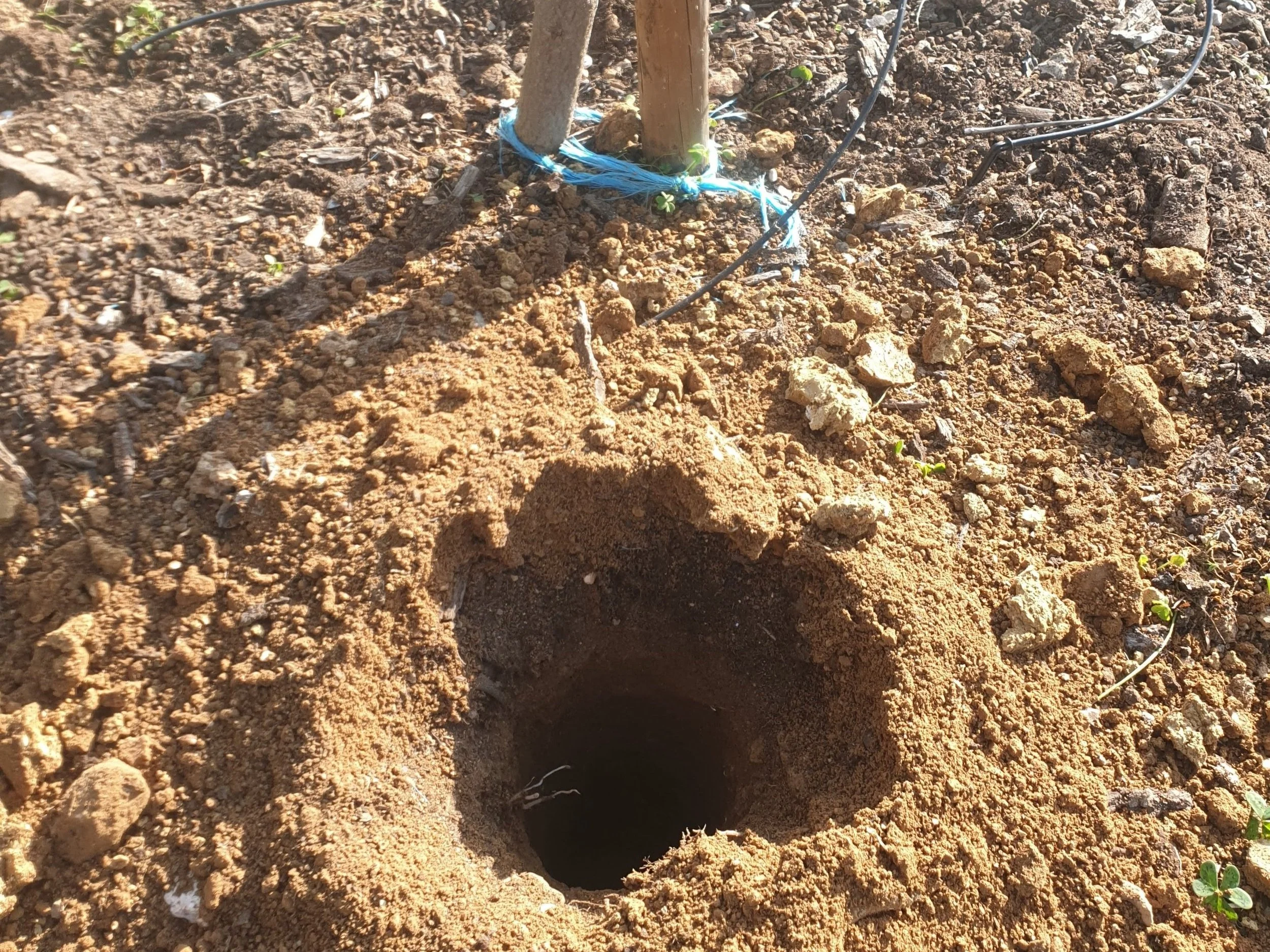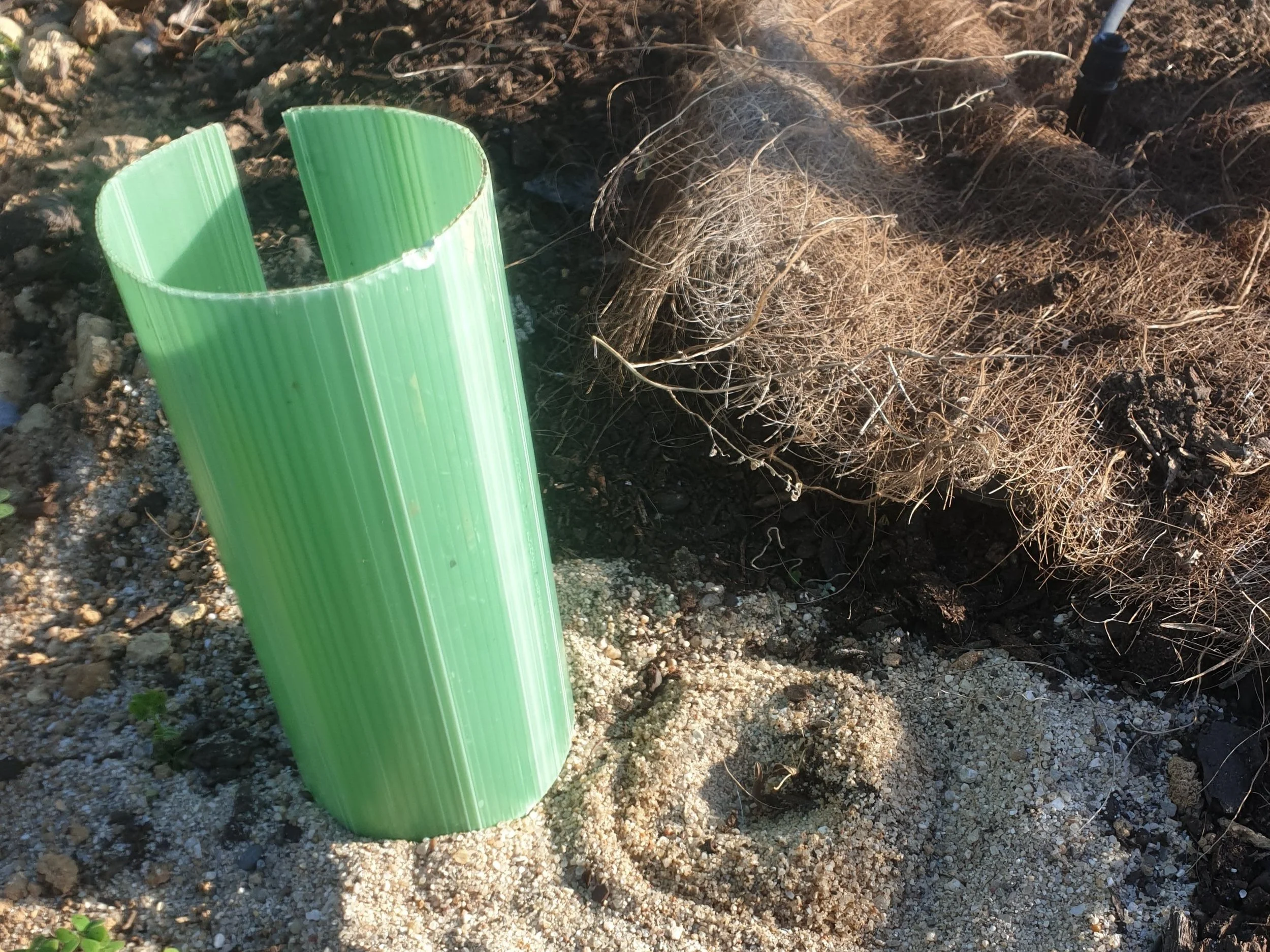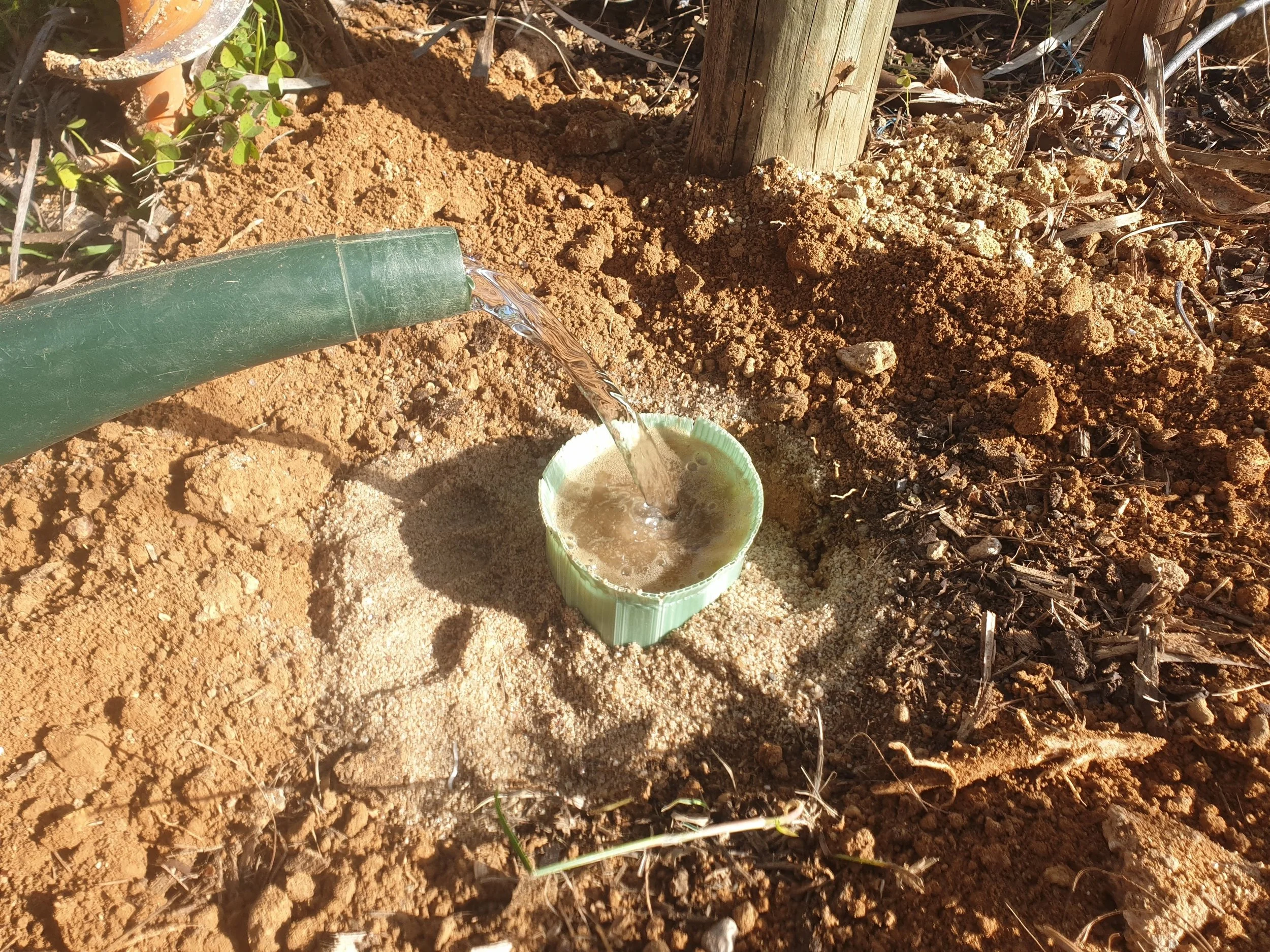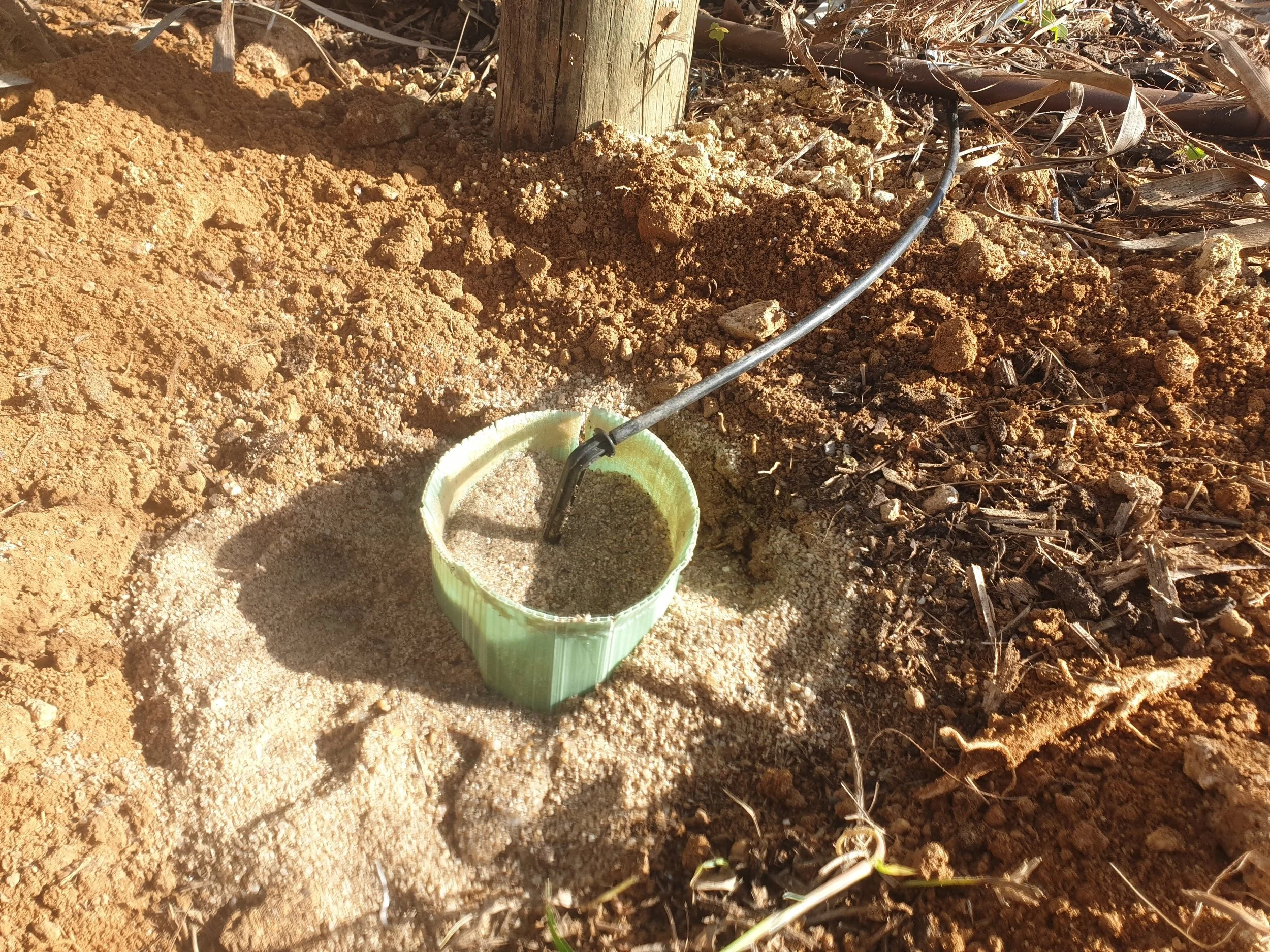How-to: Deep irrigation for clay soils
As the threats of climate change and desertification continue to spread and make themselves more and more noticeable in our everyday lives, they bring along a real urgency to find solutions to tackle the increasingly frequent scenarios of water scarcity and drought.
Being located in one of the driest areas of Europe, Orchard of Flavours acts not only as a laboratory for subtropical fruit growing in this continent, but also as a lab for a drought-resilience-focused approach to growing fruit trees.
By reading our articles on a drought emergency plan, irrigating efficiently, and favouring drought-tolerant plants, you can already see how much of our day-to-day is focused on solutions for growing happy, healthy plants in a drought-prone context as is our area of Tavira, Algarve.
In this particular article, however, we’ll be focusing on a technique we call ‘deep irrigation system for clay soils’.
Deep irrigation, or deep watering, is a well-known technique that can be used to train plants to grow deeper roots and be more resilient in case of drought, by irrigating directly to a deeper soil profile, instead of at the surface.
If you have a sandy soil, water percolating deeply into the root zone is not usually an issue. However, if your soil is more on the clayish side, water will surely take a while longer to infiltrate. Depending on watering style, water might even puddle for a bit until it finally goes down, bringing about at least some loss due to evaporation.
There is a lot of product innovation around deep irrigation, but in most cases the solution implies the use of perforated plastic tubes or probes which are buried deep in the soil. We think this is not a sustainable approach, and one that can be very costly. Moreover, once the tree is well established, it will be impossible to remove the plastic tube because the roots will be surrounding it or clogging the holes. We wanted to find a better and simpler way of deep irrigating in our specific context.
Therefore we thought of an alternative solution. Why not simply dig a hole with an auger and pour coarse sand or river pebbles into that hole? We believe that, in our clay soils, this column of sand or river pebbles should stay intact for quite some time.
So we came up with this very simple, eco-friendly and cheap way of deep irrigating our trees, hopefully drought-proofing them far into the future. Read along to follow our innovative (but simple) process, step-by-step.
Step 1:
Use an auger (or another post hole digging tool of your choice) and dig a hole of around 10cm diameter wide and 60cm deep. The exact depth should depend on your fruit tree’s size (as well as species, which usually tells you more about each tree’s root profile). You can start with a hole of about 30cm for young saplings and later on you can add deeper ones.
Of course, you should not dig the hole too close to the trunk, as you might damage the existing roots. At the Orchard, as a rule of thumb, we try to drill just outside the dripline of the tree (directly located under the outer circumference of the tree branches), as that line is usually seen as being the most active water absorption area, while also giving us enough of a ‘safety buffer’ to avoid damaging any already existing roots.
Step 2:
Place a small plastic tube (a tree growing tube could work), of around 15cm in length, into the opening of the freshly dug hole. Keep it a few centimeters above the surface level.
This is not an essential step, but we like using it as a marker of where we put the sand column for deep irrigating that particular tree. It also helps keeping things tidier and making sure that we can easily do the watering without worrying so much about water spilling out (and defeating the whole point of making these deep irrigation sand columns).
Step 3:
Pour coarse sand or river pebbles into the hole, filling it up. Just make sure the sand isn’t salty or treated with anything harmful!
Effectively serving as a bypass for water, coarse sand allows it to percolate into the soil very easily, while also being a good mineral soil amendment as well, so we are not doing any harm to our trees, only helping them!
Step 3.5:
As an extra step, we’ll be experimenting with using this sand column to more effectively inoculate microbial biostimulants (plant growth-promoting rhizobacteria and mycorrhizal fungi) onto the roots of the plants down below.
Find more about how biostimulants can boost drought-resistance by reading our article on them.
Step 4:
It’s watering time! Choose your preferred method of watering, and go for it!
Whether you do it manually by using a watering can, or automatically by sticking a drip irrigation peg into the sand column, you will always be taking advantage of this method’s benefits.
Done!
A simple, cheap, low-tech and eco-friendly solution to a serious problem!
We’ll be keeping you posted on the results of this experiment, and stay open to new suggestions and inputs you might have.
Something we expect might be needed further down the line is to add more holes around one tree, as its roots grow and maybe decide to ‘colonize’ that first sand column. We’ll be keeping an eye out for any signs of stress and take measures accordingly.
Find more of our articles regarding this important subject on our Irrigation and Water Saving section.
This article was compiled by Miguel COTTON, Jackson KNIGHTS & Miguel PEREIRA. If you have any questions or suggestions, do not hesitate to contact us. miguel@orchardofflavours.com


